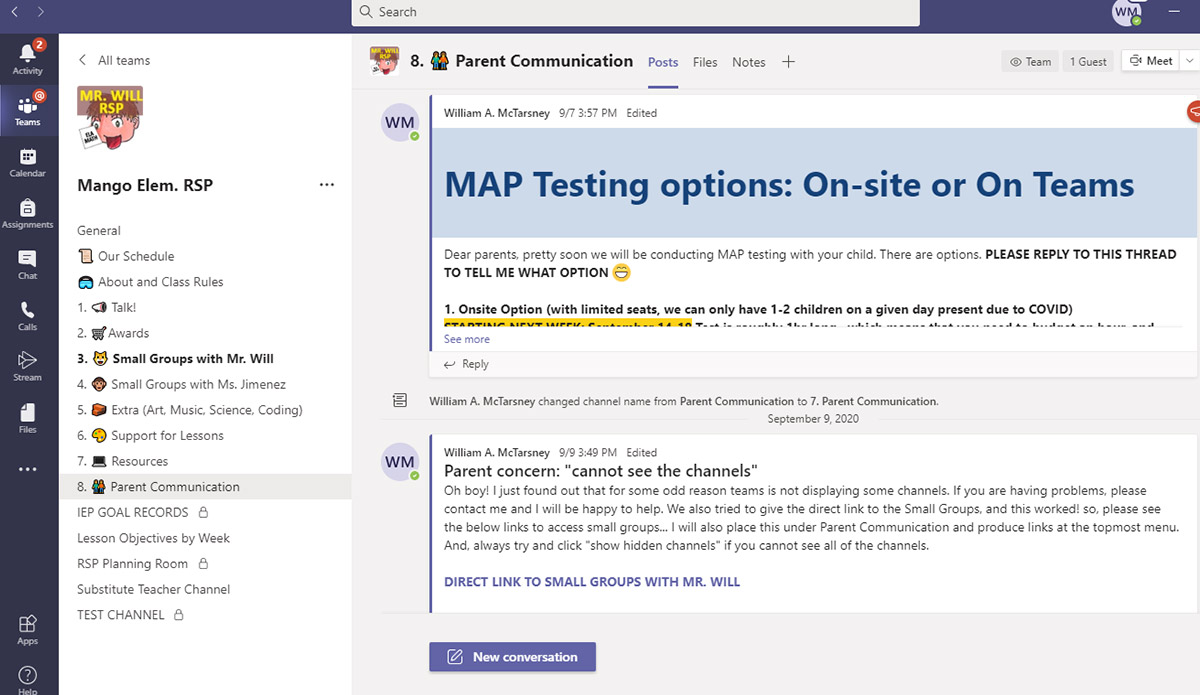Artifacts: Zombie Apocalypse Lessons & Website (Hybrid and Distance), Screens of Teams chat environment & communication.



Highlights
- - Padlet and Kahoot! digital web tools that captivate and capture student prior knowledge.
- - Use of MicroSoft Teams/LMS for ongoing parent communication.
- - Lesson plans that build upon real-life scenarios such as social norms.
- - Variety of digital nearpod lessons that promote critical and creative thinking skills.
- - Adobe Illustrator driven lessons which provide interactive visuals aim to ELL and disabled learners.
- - Lessons in drawing in traditional visual and digital arts.
- - Concrete lessons which showcase monitoring student learning and adjusting as needed.
Description for CSTP 1: Engaging and Supporting Students in Learning.
Element 1.1 - Using Knowledge of Students to Engage Them in Learning; Element 1.2 - Connecting Learning to Students' Prior Knowledge, backgrounds, life experiences, and interests; Element 1.3 - Connecting Subject Matter to Meaningful, Real-Life Contexts; Element 1.4 - Using a Variety of Instructional Strategies, resources, and Technologies to Meet Students' Diverse Learning Needs; Element 1.5 - Promoting Critical Thinking Through Inquiry, Problem-Solving, and Reflection; Element 1.6 - Monitoring Student Learning and Adjusting Instruction While Teaching.
Element 1.1 Evidence
Data collection (CBM assessments, MAP testing, Lexia/Moby Max, progress monitoring cards, anecdotal records, daily debriefing with instructional aide); Implementation of Data: discussion with general education teacher and students with a KWL chart; Technology: Personalized web page projects for lessons which are tailored to student needs, use of Teams for distance education (Teams channels, remote video classrooms).
VIEW PICTURE
Artifacts: Snapshots of MAP asessments results.
Element 1.2 Evidence
Use of school resources (Microsoft Teams, Flipfgrid, Nearpod); Daily rapport with teachers and students (1:1 communication, making an effort to research their background knowledge ahead of time. Communicate with gen ed teachers on Teams, phone, e-mail, or in person, and ask questions about students and their feelings during lessons.
Element 1.3 Evidence
Engaged in active experiences; extended learning by obtaining a 2nd master's degree in special education (after assessments and related to real-life experiences); stayed motivated with tangible realias (online lesson projects and producing school assembly videos); Use of online tools such as demonstration tools and custom authoring tools (Adobe Illustrator).
Element 1.4 Evidence
Incorporated UDL strategies for promoting differentiated learning; provided student-choice; related prior-knowledge to lessons and links to formulate new knowledge; built and used interactive spaces for student-choice & activities such as Nearpod.
Element 1.5 Evidence
Supported students with question strategies & explored multiple perspectives through examples (both visual, motion and realia); technology is used to capture student responses through exit tickets (i.e., raffles, ClassDojo, inquiries); after meaningful prompt/discussion- students are asked to collaborate with technologies such as Team chatbox discussions and surveys.
Element 1.6 Evidence
Through teacher-guided lessons, I would pause & scan the room for body language and ask students if 1) they use thumbs up/down/sideways, 2) raise the whiteboard to sure responses and share. I would raise questions to gauge input, such as "how do you know?" and adjust my instruction per their input.













